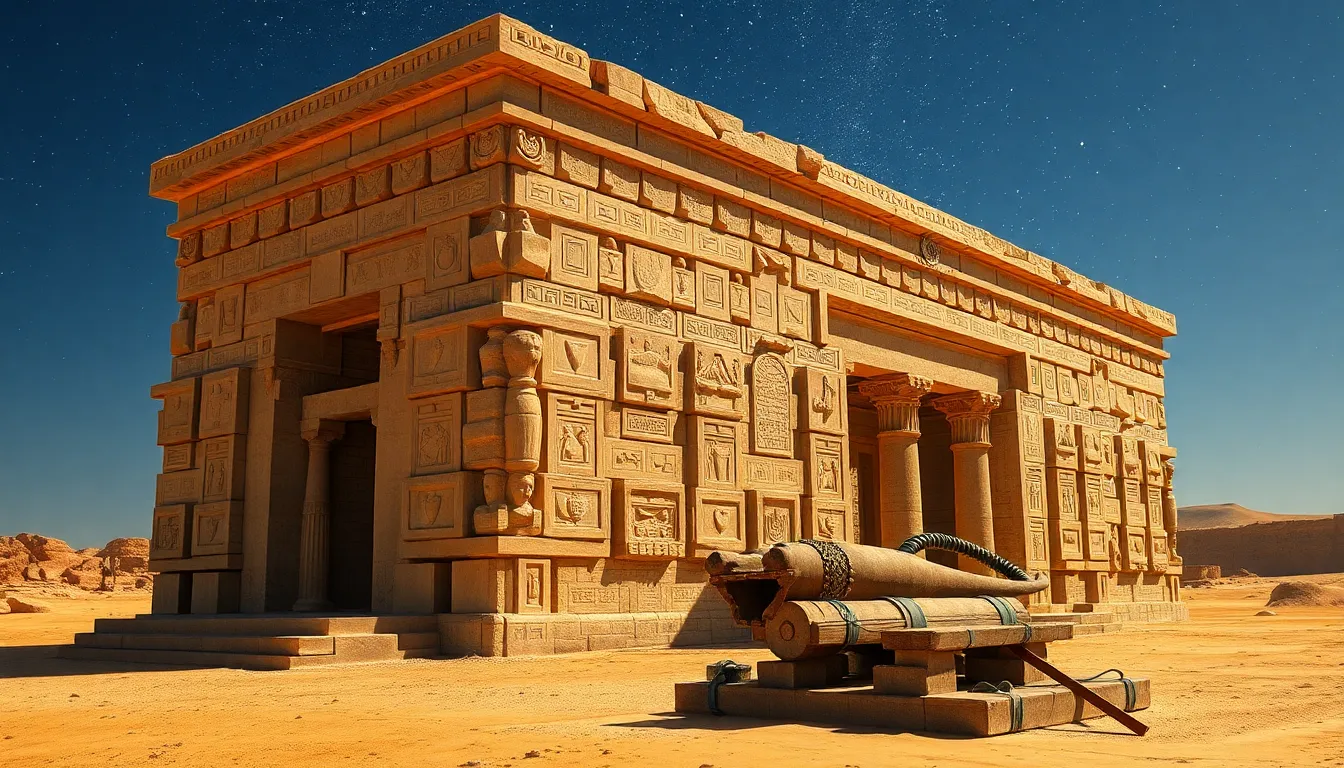The Connection Between Royal Burials and Astronomy
I. Introduction
Royal burials have long fascinated historians and archaeologists, providing insight into the values and beliefs of ancient cultures. Across various civilizations, the practice of honoring leaders and monarchs through elaborate burial rites reflects a society’s reverence for power and the afterlife. Among the many elements that influenced these practices, astronomy played a crucial role. By examining the connection between royal burials and celestial phenomena, we can uncover the profound significance that ancient peoples ascribed to the cosmos.
II. Historical Context of Royal Burials
Royal burials refer to the interment practices reserved for kings, queens, and high-ranking individuals within a society. These burials often involved grand tombs, rich offerings, and intricate rituals to ensure a successful passage to the afterlife.
- Definition and Importance: Royal burials are significant as they reflect the social hierarchy and cultural values of a civilization. They often served as a means to legitimize power and ensure continuity beyond death.
- Notable Burial Sites:
- The Pyramids of Giza, Egypt
- The Royal Tombs of Ur, Mesopotamia
- The Mounds of the Mississippian culture in North America
- The burial mounds of Norse kings in Scandinavia
Different cultures held unique beliefs surrounding death and the afterlife. In ancient Egypt, for instance, the concept of Ma’at emphasized the importance of order and justice, influencing their elaborate burial practices aimed at securing a favorable judgment in the afterlife.
III. The Role of Astronomy in Ancient Civilizations
Astronomy was an essential aspect of life in ancient societies, influencing both practical and spiritual domains.
- Astronomical Practices: Ancient civilizations observed celestial bodies meticulously, leading to the development of calendars and navigation techniques. The movement of the sun, moon, and stars dictated agricultural cycles and religious festivals.
- Celestial Events: Events such as solstices and equinoxes were marked with rituals and festivities, showcasing the deep connection between celestial phenomena and societal life.
- Spiritual Context: Celestial bodies were often considered divine entities, playing significant roles in mythology and spirituality. The stars were seen as guiding spirits, and their movements were interpreted as omens or messages from the gods.
IV. Alignments of Royal Tombs with Celestial Bodies
Many royal tombs were purposefully aligned with celestial bodies, reflecting the importance of astronomy in funerary practices.
- Examples of Alignments: The Great Pyramid of Giza is famously aligned with the cardinal points, while its shafts point toward specific stars and constellations, such as Orion and Sirius.
- Solar and Lunar Significance: The alignment of tombs with the rising and setting sun often symbolized rebirth and regeneration, reflecting the sun’s role in ancient Egyptian cosmology.
- Celestial Journey: Many cultures believed in a “celestial journey” for the deceased, where the alignment with stars and celestial bodies facilitated the soul’s ascent to the heavens.
V. Symbolism of Celestial Elements in Royal Burials
Celestial symbolism played a vital role in the architecture and artifacts found in royal burials.
- Celestial Symbols: Artifacts often included representations of the sun, moon, and stars, serving as protective symbols for the deceased on their journey.
- Mythological Connections: Many ancient cultures linked their rulers to celestial deities, enhancing their divine status and legitimizing their authority.
- Constellations and the Divine: Constellations often represented gods or important myths, connecting the royal deceased to the larger cosmic order.
VI. Case Studies: Famous Royal Burials and Their Astronomical Connections
Several notable royal burials illustrate the profound connections between these practices and astronomy.
- The Tomb of Tutankhamun: This famous burial site contained artifacts that reflected celestial themes, including a canopy resembling the sky and representations of the goddess Nut.
- Native American Chief Burial Mounds: Many Native American cultures constructed burial mounds aligned with celestial events, emphasizing the role of the cosmos in their spiritual beliefs.
- Viking Burial Ships: Viking burial practices often included ships positioned to reflect the movement of the sun and stars, signifying a journey to the afterlife.
VII. Modern Interpretations and Research
Recent archaeological discoveries have shed light on the intricate relationship between royal burials and astronomy.
- Recent Discoveries: New findings, such as the alignment of ancient sites with celestial events, continue to support the connection between astronomy and burial practices.
- Technology in Research: Advances in technology, such as satellite imaging and 3D modeling, allow researchers to explore ancient alignments and understand their significance more deeply.
- Ongoing Debates: Scholars continue to debate the interpretations of these astronomical connections, challenging previous assumptions and encouraging further investigations.
VIII. Conclusion
In summary, the connection between royal burials and astronomy is a rich field of study that highlights the importance of celestial phenomena in ancient cultures. From alignments of tombs with stars to the symbolism of celestial elements, it is clear that astronomy significantly influenced practices surrounding death and royalty.
The enduring impact of these beliefs is evident in the continued fascination with royal burials and the cosmos. Future research will likely uncover even more intricate connections, revealing how ancient peoples understood their place in the universe and their beliefs about the afterlife.




